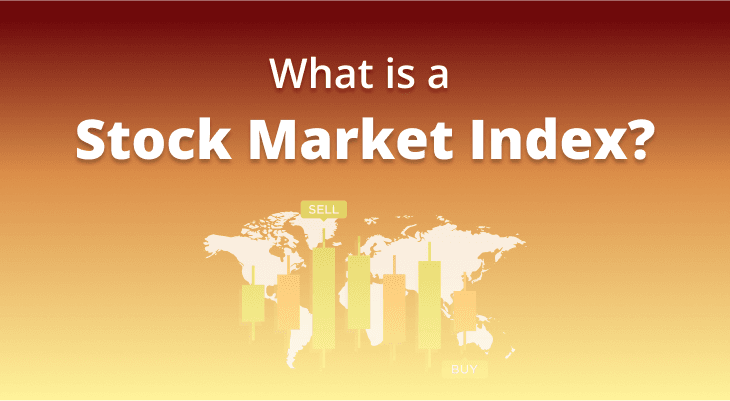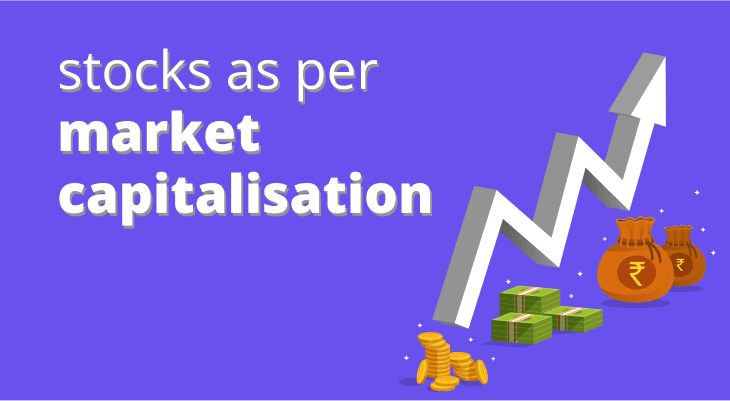
What is a Stock Market Index?
If you are just getting started with investing in the stock market, there are many aspects and concepts that you need to be aware of. The more you know, the better you can tailor your investment strategy to capitalise on the market movements. One such important aspect of the stock market that you need to understand is the stock market index.
You may have heard of the top indexes like the Nifty 50 and the Sensex. However, if you’re unclear about the real meaning of stock market indexes, this article can help you with the answers you’re looking for.
What is a Stock Market Index?
A stock market index is a statistical measure that reflects the performance of a particular segment of the stock market. You can think of an index as a hypothetical portfolio of handpicked stocks. These stocks all share some common characteristics. For instance, they may belong to the most well-established companies listed on an exchange, or they may all be stocks of companies from the same sector.
Each index is assigned a value when it is first formed. Thereafter, the values of stock market indexes rise or fall based on the performance of the constituent stocks. If the constituent stocks perform well, the value of the index rises. Conversely, if the segment of the market that the index reflects performs poorly, the index falls in value.
Types of Stock Market Indexes
Depending on the criteria chosen for the constituent stocks and the segment of the market that an index reflects, it can be any of the following types.
Benchmark Index
A benchmark index represents the overall performance of the stock market. It includes a diverse range of stocks from different sectors and provides a broad perspective on the prevailing market trends. Investors and fund managers often use these stock market indexes to gauge the performance of their portfolios relative to the market. This is why they are called benchmark indexes.
Examples of benchmark indexes:
Nifty 50 (comprising the top 50 well-established companies on the National Stock Exchange)
S&P BSE Sensex (comprising the top 30 companies on the Bombay Stock Exchange)
S&P 500 (the 500 largest companies listed on stock exchanges in the United States)
Sectoral Index
Sectoral indexes consist of stocks chosen from specific market sectors like technology, healthcare and finance. These indexes track the performance of stocks within a particular sector and offer insights into the health and trends of that market segment. Investors use sectoral indexes to analyse sector-specific trends and make informed decisions for sector-focused investments.
Examples of sectoral indexes:
S&P BSE Auto
S&P BSE Healthcare
S&P BSE Information Technology
Nifty Auto
Nifty Bank
Nifty FMCG
Market Cap Index
Market cap indexes help investors understand and invest in companies based on their size. They categorise stocks based on their market capitalisation, which is the total market value of a company's outstanding shares. These stock market indexes can be further divided into categories like large-cap, mid-cap and small-cap indexes, each representing different segments of the market based on the size of companies.
Examples of market cap indexes:
S&P BSE MidCap
S&P BSE SmallCap
S&P BSE AllCap
Nifty Midcap 150
Nifty Smallcap 50
Nifty Microcap 250
Other Kinds Of Indexes
Aside from the stock market indexes explained above, there are others that consist of specific groups of stocks based on various peripheral criteria. For instance, there are larger broad market indexes like the following:
Nifty Next 50
Nifty 100
Nifty 200
S&P BSE Sensex Next 50
S&P BSE 500
Formation Of An Index
The process of forming or creating an index is quite interesting. Once the constituent stocks are identified, the value of a stock market index can be determined based on different methodologies like the market capitalisation-weighted index creation or price-weighted index creation. Let’s examine these two methods further.
Market Cap Weightage
In a market cap-weighted index, the value of the stock market index is based on the total market value of the constituent companies' outstanding shares. Companies with higher market capitalisations have a larger impact on the index's value. This means that changes in the stock prices of larger companies will have a more significant effect on the index than changes in smaller companies. As a result, the market-cap weighted method is often believed to reflect the actual market influence of the companies.
Some examples of market capitalisation-weighted indexes include the S&P 500 and the NSE Nifty 50.Price Weightage
In a price-weighted index, the value of the stock market index is determined by the price of the individual stocks, irrespective of the company's market capitalisation. Here, stocks with higher prices have a greater influence on the index's value than those with lower prices. This method can sometimes give a skewed representation because it doesn't consider the overall size or market value of the company.
An example of a price-weighted index is the Dow Jones Industrial Average (DJIA), where the index is computed based on the sum of the prices of the constituent stocks, divided by an index divisor.
Conclusion
With this, we come to the end of this quick guide on stock market indexes. This should give you more clarity on the meaning of a stock market index, the types of indexes and the methods used to create these benchmarks. With these insights, you can create an informed investment strategy to include stocks from an index in your portfolio. Alternatively, you can also invest in index funds, which mimic the composition of benchmark indexes.
FAQ
What is an index in the stock market?
A stock market index is a statistical measure that represents the performance of a group of stocks. It gives you insights into how a particular segment of the stock market or the market itself is performing. This helps you compare your investments against a broader benchmark.
How to read a stock market index?
To read a stock market index, you need to look at its current value and the percentage change in this value. The value of an index represents the combined performance of all its constituent stocks. A rise or fall in this value gives you insights into the general movement of the broad market or the specific sector that the index reflects.
What do stock market indexes indicate?
Stock market indexes indicate the overall performance of the market as a whole or a segment of the stock market. They allow you to assess how a group of stocks is performing and offer insights into the general investor sentiment about those stocks. In short, indexes are benchmarks that help you compare individual stocks or portfolios against the market performance.
How many indexes are in the Indian stock market?
There are hundreds of indexes in the Indian stock market. They include broad benchmark indexes, sectoral indexes, market cap-based indexes and more. Together, they help you track various segments of the Indian equity market.
What are India's two major stock indexes?
The two major stock indexes are the Nifty 50 and the BSE Sensex. The Nifty 50 comprises the top 50 stocks listed on the National Stock Exchange, while the BSE Sensex is composed of the top 30 stocks listed on the Bombay Stock Exchange.


